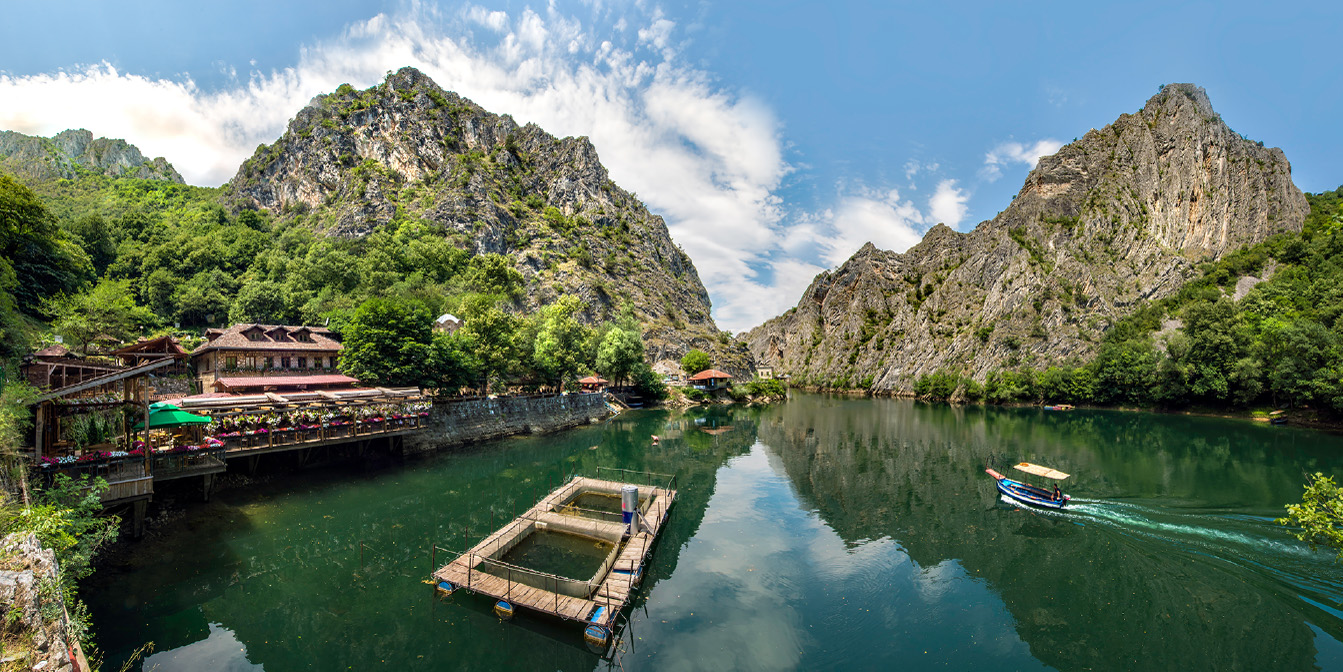Canyon Matka

Matka is a canyon located west of central Skopje, Macedonia. Covering roughly 5,000 hectares. Matka is one of the most popular outdoor destinations in Macedonia and is home to several medieval monasteries. The Matka Lake within the Matka Canyon is the oldest artificial lake in the country. There are ten caves at Matka Canyon, with the shortest in length being 20 metres (65.6 feet) and the longest being 176 metres (577.4 feet). The canyon also features two vertical pits, both roughly extending 35 metres (114.8 feet) in depth.
Vrelo Cave
Located on the right bank of the Treska River, Vrelo Cave was listed as one of the top 77 natural sites in the world in the new 7 wanders of nature project. Vrelo Cave has many stalactites including a large one in the middle of the cave known as the “Pine Cone” due to its shape. There are two lakes at the end of the cave, with one larger than the other. The smaller lake is 8 metres (26.2 feet) at its longest length and 14.92 metres (48.9 feet) in depth at its deepest point. The larger lake is 35 metres (114.8 feet) at its longest length, and 18 metres (59 feet) at its deepest point. Though the exact depth of the cave is unknown, some speculate that it could be the deepest underwater cave in the world. The cave can only be reached by water either by a boat or kayak.
Monasteries
The canyon area is home to several historic churches and monasteries. St. Andrew’s Monastery is situated in the gorge of the Treska River. Matka Monastery, or Monastery of the Holy Mother of God, built in the 14th century, is located on the left bank of the Treska. According to an inscription on the church, someone named Milica found the church in poor condition and without a roof in 1497. She replaced the roof, added new frescoes, built a portico and created a vineyard
St. Nicholas Monastery is located on a cliff above the canyon and St. Andrew’s Monastery. The date of construction of the church is unknown. The first mention of it was in the 17th century, during Ottoman rule. The iconstasis of the church was painted in 1645, while the western side was frescoed in 1630. The monastery was deserted in the 18th century. An archmonk found the church roofless in 1816 and attempted to revive it, though it was again deserted in 1897. The monastery offers a unique view high above the canyon.
